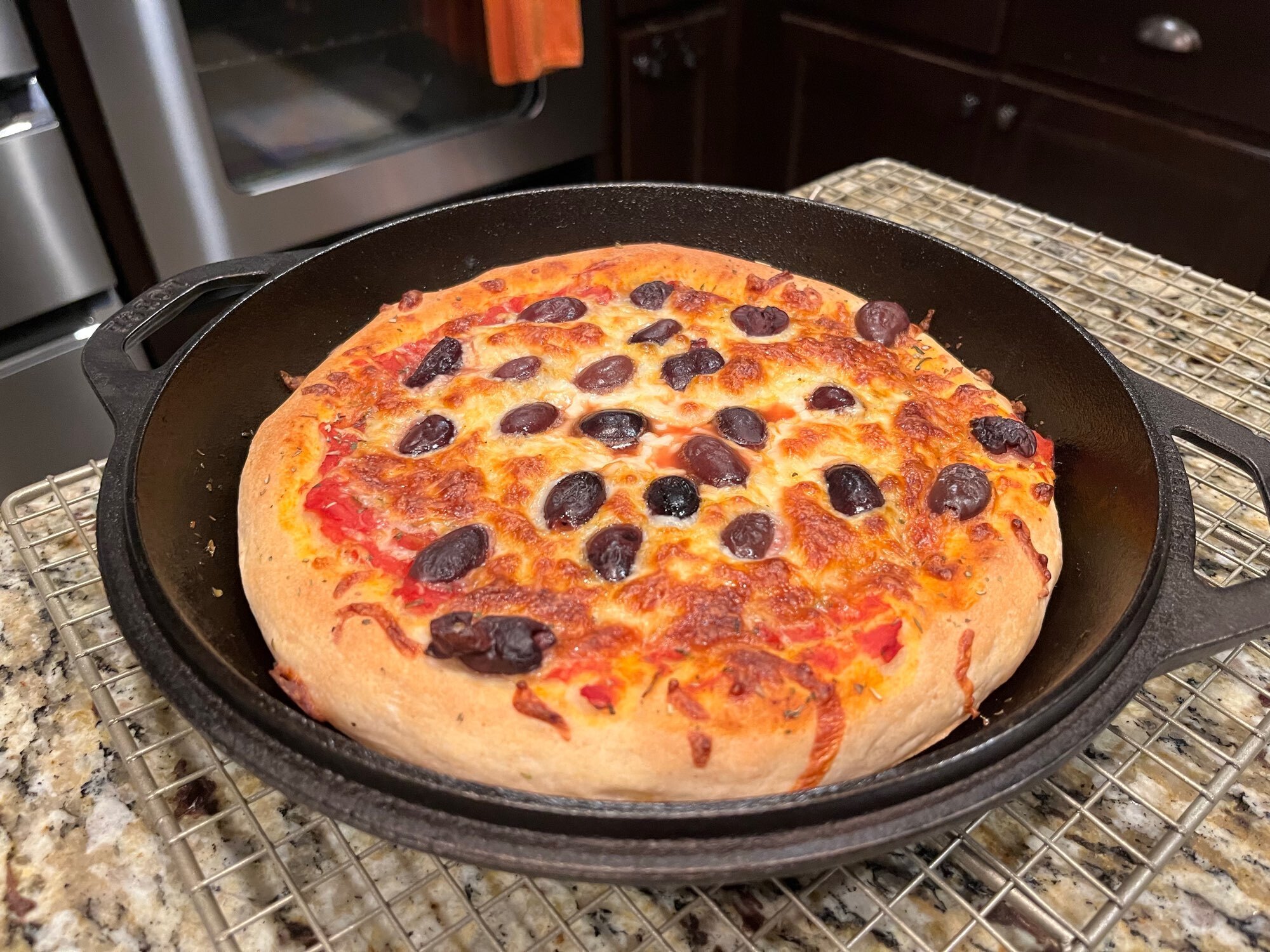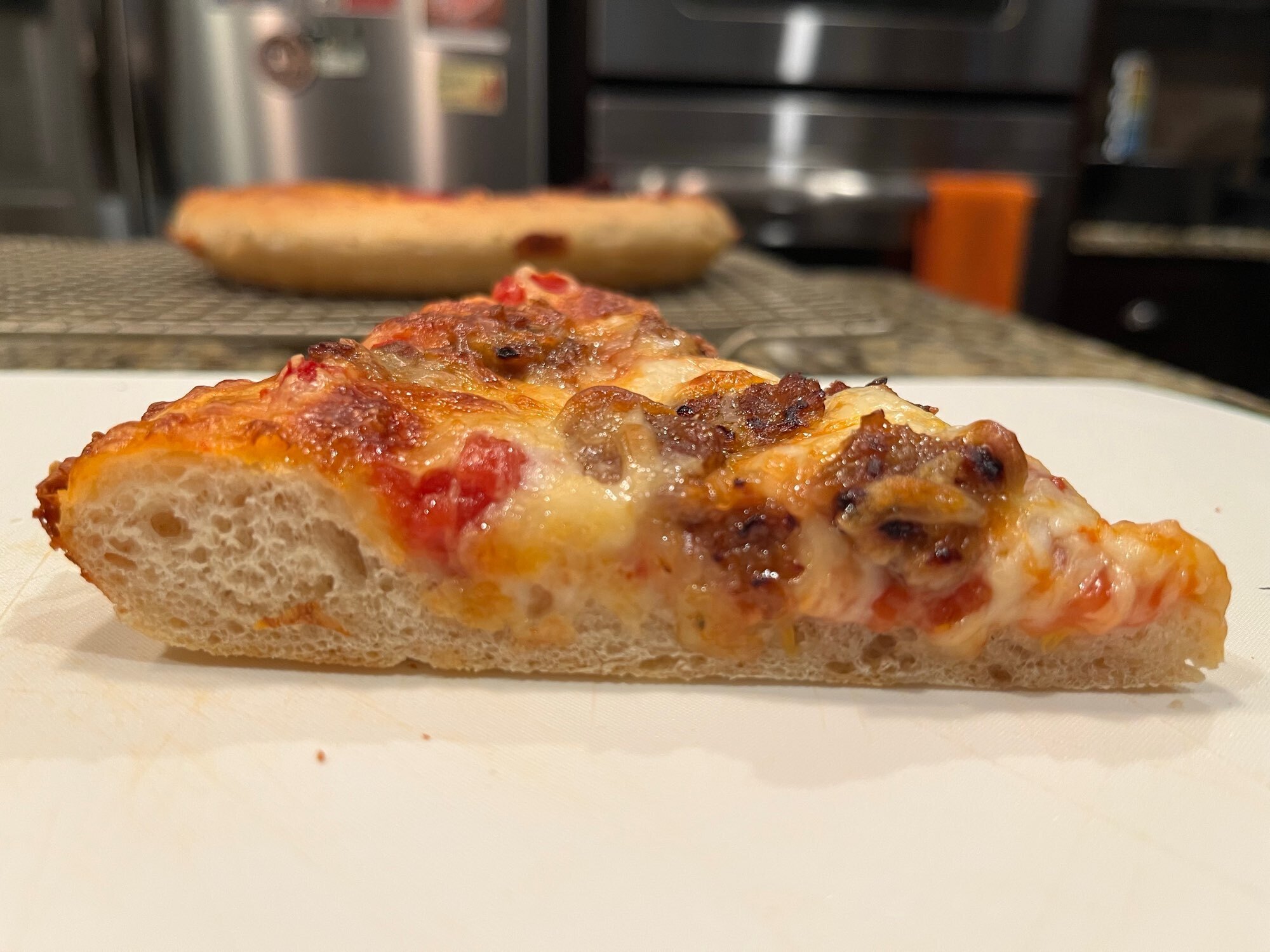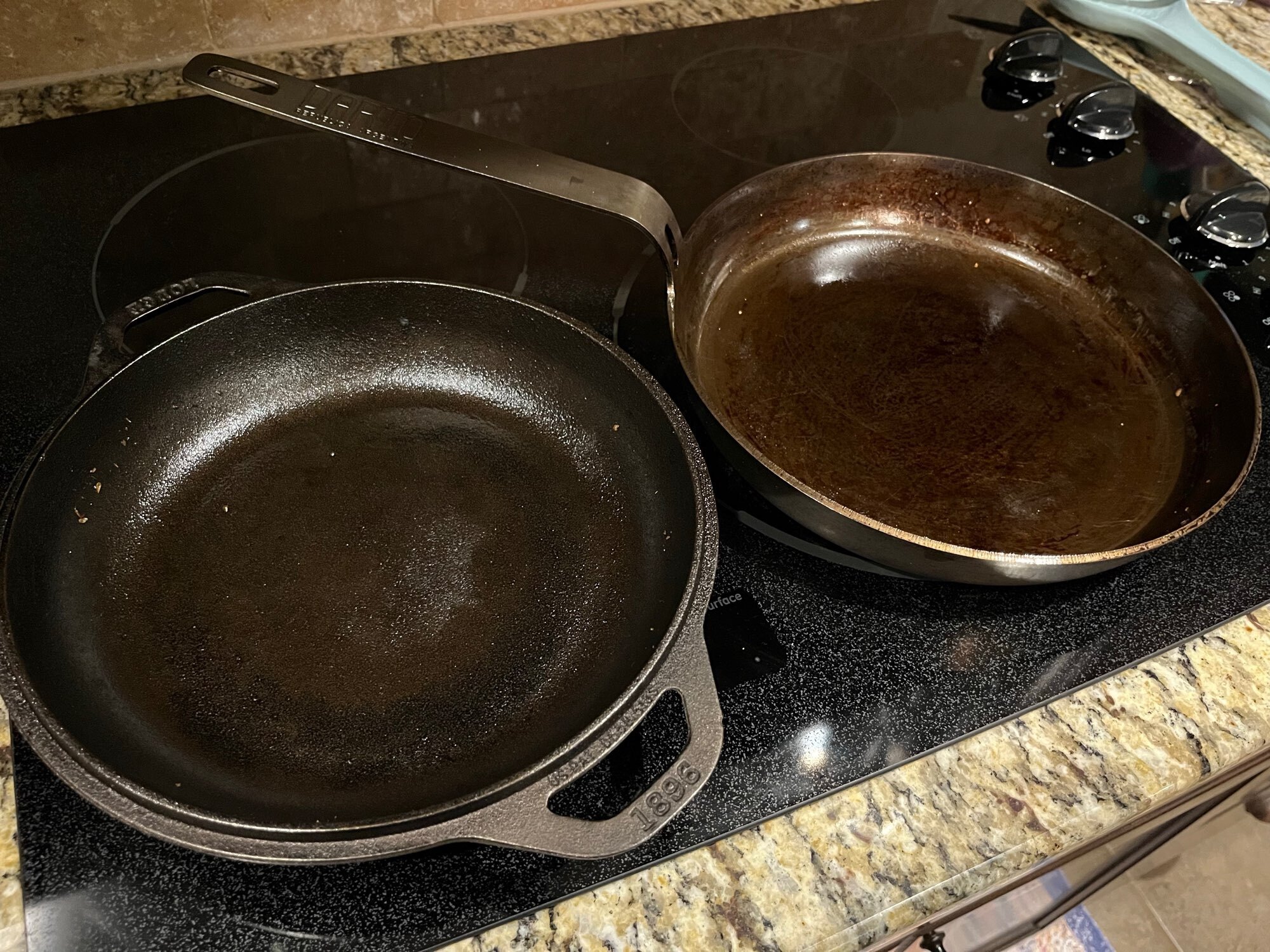Homemade pizza dough and sauce in my Lodge double Dutch oven lid and Darto carbon steel pan. The dough was cold fermented in the fridge then proofed in buttered pans. I cooked the dough on the stove top briefly to help it firm up before adding sauce and toppings.
For a crispier bottom, an alternative is to preheat the pans then add oil and (carefully) spread the proofed dough into the pan before adding toppings and cooking.




How does it not stick!?
Butter is magic! (and I definitely didn’t skimp on it…)
I use oil and cornmeal (course ground).
Oil, brah.
I’ve rarely had pizza or bread on cast iron stick. If a spot does stick then I scrape it clean with a metal scrubbing pad and the next pizza just ever so lightly brush a tiny bit of oil on and bake as usual.
Dough looks great.
You put the dough in a cold pan?
Yep, it makes shaping to the pan easier (and safer), though I’m still working on getting a crispy crust with this method.
I used to proof it on the counter before dropping it into a hot, oiled pan, and that produces a great crispy bottom. This method is lazier, though, and with butter, the dough hasn’t stuck at all for me.
I’m using roughly this method, though with my own dough recipe.
I suspect my crust doesn’t come out as good because my oven has the heating element on top. The linked recipe suggests putting the pan on the bottom rack, which makes me think they assume a bottom heating element.
I preheat my pan on the stove with a little oil, then drop the dough in pre-shaped (folded to make handling easier.) The bottom cooks while I assemble the toppings, then I throw it under the broiler til the top is crispy. If you’re going to do a cold pan, then I don’t see why using cast iron is beneficial. It seems like it would just prolong the time in the oven, especially if you’re only using a broiler element.
I’ve done both and I prefer the cold dough method. Shaping it hot is quite hard with a lot of toppings, proofing it in the cast iron also keeps it fluffy. Now there’s a huge difference in how you bake it. For “cold” cast iron you need bottom heat, lots of it. So for me what works is maximum bottom heat, low grate for about 5-10 minutes. I have a gas oven, so there’s no shortage of bottom heat. After that I turn the heat down a bit and bake the rest of the pizza while not burning the bottom. Unfortunately I don’t have a fan or a top heating element,but if you do then that’s a great time to move the pizza up a bit and use full surround heat. The other big factor is the shape of your cast iron, a deep ridged skillet bakes differently from a flat griddle. Lastly it’s important to have your cast iron at room temperature.
For really crispy pizza I use a flat surface (stone or iron) and then slide the entire pizza on at once using a big paddle. This takes practice, sometimes the toppings want to move but the bottom wants to stay. The trick I learned there is to slide it off slowly.
I don’t find the shaping hard at all. I stretch it to the right size on my cutting board, then fold it to a carry-able size and drop it into the hot skillet, unfold it, and put the toppings on.

